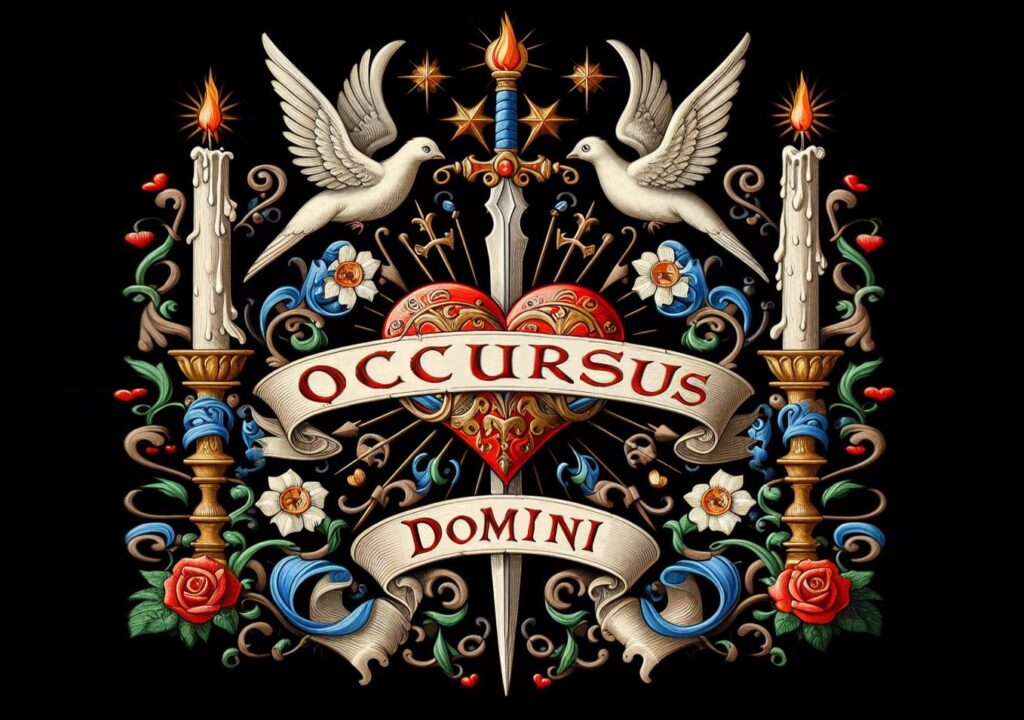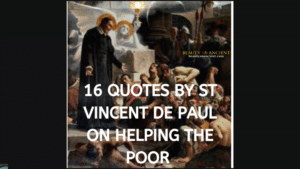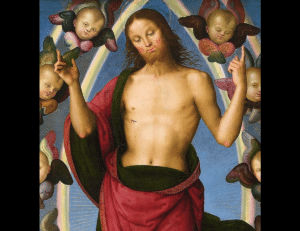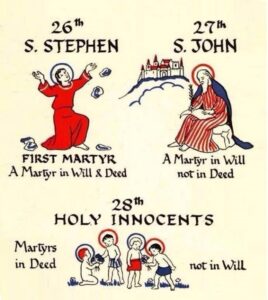Two Candles, Two Doves and a Sword| Feast of Candlemas
How the Candlemas Story Bridges Christmas to Easter
“O Mary, who becamest, through Christ, a light to guide mankind, obtain for us the light of grace clearly to discern our vocation as children of God, and to walk therein with unfaltering steps!”
Sermons for Every Feast of the Ecclesiastical Year,” Fr. F.X. Weninger SJ, 1882

Feast of Candlemas
The Feast of Candlemas is the oldest of feasts of the Blessed Virgin Mary. The feast, once known as the Occursus Domini, roughly translates as the “meeting of the Infant Lord.” This dual celebration commemorates the humility and obedience of the Holy Family, particularly Mary, in their obligations to the Mosaic Law. The custom required the presentation of the first-born child and that certain offerings be made in addition to a Purification Rite for the mother to return to the Temple after 40 days. As such, the Western Church liturgy has more focus on Mary than on the Infant Jesus, who appears to be a passive participant (as far as we know!).
When Does the Christmas Season End?
The feast of Candlemas is the traditional close of the liturgical Christmas cycle, particularly for traditional Catholics. Like Easter, the extended season of Christmas is traditionally celebrated over a 40 day period, happening to mirror the 40 day purification period as well as the familiar symbolic 40 days of other scriptural accounts.
However, this assumes that Candlemas falls after the beginning of Septuagesima. This happens just over half the time based on the movable feast season tied to Easter (the mean date for Septuagesima is about February 5). Refer to the Theophanic Matrix as a convenient reference for the starting date of Septuagesima and the other dates tied to Easter.
When do Catholics Take Down Christmas Decorations
When Septuagisma starts before Candlemas, it would seem desirable to end the Christmas celebration and take down any remaining decorations because it would feel liturgically bipolar to be celebrating a festive season at the same time as a penitential one. However, as a transitional period and warm-up to Lent itself, there is no reason to be too scrupulous in these observances, noting that the author’s own traditional parish will be fully embracing the traditional observance of Septuagisma while leaving Christmas decorations up until February 3. Lent may begin as soon as February 4 but more typically starts in mid-February to early March.
This endpoint is reflected in the Liturgy of the Hours. The Marian antiphon Alma Redemptoris Mater is used from the start of Advent through 2 February, after which Ave Regina Caelorum is used through Good Friday. This reflects the liturgical transition of seeing Mary in her beginning role as Mother to her later role as Queen of Heaven. The Alma references Mary as the North Star. The North Star of ancient times was once a star in the constellation of Draco the Dragon, foreshadowing Mary’s defeat of the Dragon.
The date of the feast in Rome was chosen as February 2 because the Roman date for Christ’s nativity had been December 25, since at least the early fourth century (more on this later!). The importance of this feast was signified by the fact that it was once celebrated as an Octave.
Half Way There!
Candlemas, as well as the associated three-day “Triduum of Fire” provides a spark of additional interest and joy during what many would see as the cold, dark “dog days of winter” as well as the lull between Christmas and Lent when not much else is going on.
In Jewish tradition, solstices and equinoxes figure predominantly in important events, with the conception of St. John the Baptist thought to have occurred on September 24, the autumn equinox, which was the Jewish Day of Atonement. At this time, the sun crosses the equator and a foreboding shortening of days occurs with his birth occurring on or near the summer equinox. While Candlemas seems then to conveniently (or providentially) fall exactly at the midpoint of our winter, halfway between the winter solstice and spring equinox, this was not necessarily divinely appointed.
Our current astronomical winter solstice (Dec. 21) is not observed at the same time as it was historically observed. In biblical times, it was several days later. Venerable Mary of Agreda asserts that the true date of the birth of Jesus was on the “winter solstice,” which at that time varied from year to year (based on both lunar and solar cycles) falling closet to the Jewish date of Kislev 25. However, these scholars point out that due to a nuance with the B.C. calendar correction, the Jewish Kislev might actually be three days before the Julian date for the month of December! Because it is uncertain whether the birth was on the imprecise liturgical “winter solstice” or the more precise astronomical winter solstice, there is some ambiguity of the actual precise date. December 25 therefore is pretty good estimate of the latest possible true date.
Suffice it to say, Candlemas falling roughly halfway between Christmas and Lent and winter and spring should be good enough for our purposes.
The basic outline of Candlemas, which commemorates the Presentation of the Infant Jesus in the Temple and the Purification of Mary is a familiar story, appearing in Scripture based on the account in Luke 2:22-38. This 40-day period following the birth of a child was prescribed under the Jewish Law in Leviticus 12:1-4. This observance of Mary to be ritually purified (although unnecessary) reminds us of the later example of Jesus being baptized.
The Feast of Candlemas Backstory Revealed
According to the mystical revelations of Ven. Mary of Agreda, the Holy Family had resided for a time after their time in the cave at the home of a poor woman benefactor (refer to her account at the end of the Epiphany story).
The Virgin Mary had wanted to make the trip to the Temple with much due reverence and ceremony to ascribe great importance to it. They stopped on their way at the beginning of the trip at the cave of the Nativity one last time. Here she kneeled and asked for a solemn benediction from Joseph. She also asked if she could make the remainder of the journey barefoot. Joseph denied her latter request, fearing the cold weather could harm her, not understanding at that time the additional divine privileges and protections that she enjoyed. As they departed, she asked her Divine Son to place an angel to guard this sacred place.
Use coupon code BSA for 15% off
Then the holy family made their solemn procession to Jerusalem, joined by legions of angels to escort and protect them. This trip from Bethlehem to Jerusalem was about six miles long, but the weather became most severe, making it seem even longer. The infant Jesus began to cry from the icy stings of the wind and sleet. As she had previous done with adverse weather in the cave of the Nativity, she asked God only for a moderation of elements toward her Son, but willingly suffered the effects of the cold. In her great wisdom, she lamented how the affliction of cold upon Jesus was a symbol of ungrateful man, for from the time of Adam so many had rejected the precepts of the Eternal Father.
As they approached the gate of the city, the Holy Spirit revealed the approach of the Holy Family to both the high priest Simeon and the aging widow prophetess Anna. As a result, a temple official was sent out to receive them and give them some well-appointed lodging. Once settled, Joseph went out to procure the sacrifice and to make their generous donation to the Temple at a late hour. This was done to avoid any attention or fanfare for their opulent gift of gold, incense and myrrh. Meanwhile, Mary passed much of the night in prayer, already beginning her urgent prayers to the Father on the behalf of mankind, imploring that abundant graces and mercies be returned for her most devout offering.
The next morning they took the two turtledoves that Joseph had obtained along with two candles and began their procession to the Temple, again accompanied by an even greater number of the heavenly hosts.
As they are received in the Temple, Simeon famously makes his dual prophecy of both Child and Mary: that Jesus, the one he had waited for had come–a the sign of contradiction for the fall and resurrection of many — and that a sword of sorrow would pierce Mary’s heart. This latter prophecy thereby established the origin of the devotion of Our Lady of Sorrows, to which six more swords of sorrows would be added. Mary of Agreda tells us the Infant Child bowed His head upon hearing these words, as it to silently ratify them.
At this time, we are told that Joseph also received many prophetic insights into the great unfolding mysteries of the story of Redemption, but was not given to understand them as fully as his spouse.
In these accounts, Jesus almost always addressed her “… and My Dove,” in addition to “My Dearest Mother,” etc. Almighty God would often address her as “My daughter and dove” or some similar affectionate title. Similarly, the Holy Spirit would typically address her as “My spouse and my Dove.” The slain turtledoves then clearly represents the sacrifice Mary makes of her life to the Father.
The rich symbolism of the procession and the candles became understood by the Church later, and was made instrumental in beginning the Candlemas liturgy. There is a beautiful and ancient tradition about keeping one’s Baptismal candle from the ceremony after their “Presentation” to the Father. This blessed candle was to be kept for safe-keeping, to be lit only again on one’s deathbed. This is meant as a sign of the immortality earned for us by Christ, and of the protection of our Blessed Mother.
Abbot Dom Prosper Gueranger observes that this is one of the three principal liturgical blessing ceremonies observed by the Church during the year; the other two being of the Ashes and of the Palms. This custom began about the 5th century and was thought in part to be an attempt to Christianize the practice of a pagan holiday known as Amburbalia that include the carrying of lighted torches.
The Main Story Retold as a Hymn by St. Paulinus
The story from Scripture is beautifully recounted by St. Paulinus, the Patriarch of Aquileia, who is attributed to this hymn from one of the ancient liturgies:
St. Paulinus Hymn in Latin
Postquam Puellæ ones quadragesimus
Est adimpletus juxta Legem Domini,
Maria Virgo Jesum sanctum puerum
Ulnis sacratis templi nunc in atriis
Tulit, tremendi Genitoris unicum.
Mater beata camis sub velamine
Deum ferebat humeris castissimis.
Dulcia strictim basia sub labiis
Deique veri hominisque impresserat
Ori, jubente quo sunt cuncta condita.
Duos parentes tulerunt candidulos
Pullos columbæ lacteolis plumulis,
Dedere in templo par pro eo turturum,
Legis veluti promulgabat sanctio,
Quales perustas consecrarent hostias.
Dei sacerdos humilis, mitissimus,
Erat in urbe justus, senex optimus.
Felix, beatus Simeon cœlifluus,
Sanctoque plenus adfuit Spiramine
Sacra sub aula, nutu Dei concitus.
Hic namque dudum responsum susceperat,
Sancto docente Spiritu, quod vinculo
Mortis resolvi non possit de corpore,
Donec videret Christum vivens Domini,
Quem misit altis Genitor de soliis.
Suscepit ergo Puerum in manibus,
Egit superno Genitori gratias.
Ulnis retentans benedixit Dominum,
Amore plenus cordis cum dulcedine
Addens et alto sermone subintulit:
Dimitte tuum, Domine, nunc obsecro,
In pace servum, quia meis merui
Videre tuum Salutare visibus,
Quod præparasti pietate unica
Ante tuorum populorum faciem.
Fulgensque lumen gentium in oculis.
Gloriam plebi Isræli germinis;
Positus hic est in ruinam scandali,
Et in salutem Jacob stirpis aureæ,
Donec secreta cordium se pallient.
Ipsius ecce tuam, sancta Genitrix,
Transibit ictus gladii per animam.
Servabat alta mystica sub pectore
Maria, verba conferens alacriter,
Dictis supernis credula fideliter.
Gloria Patri Jesu magni nominis,
Et tibi, Nate Patris unigenite,
Deus, potestas, virtus super æthera:
Sancto per omne sæculum Paraclito
Laus infinita, honor et imperium.
Amen.
The Dolorous Passion of Our Lord Jesus Christ: From the Visions of Anne Catherine Emmerich
Use coupon code BSA for 15% off
St. Paulinus Hymn in English
As soon as the Maiden’s forty days were accomplished,
according to the Law of the Lord,
the Virgin Mary took the Holy Child Jesus,
the Only Begotten Son of the Eternal Father,
into the Temple, carrying him in her saintly arms.
The Blessed Mother carried upon her most chaste bosom
God, who was hid under the veil of our flesh.
Sweetly and fondly does she kiss the lips
of him that was true God and Man,
and at whose bidding all things were made.
The Parents took two tender
little milk-white doves,
which they offered for Jesus,
and which, by the prescription of the Law,
were consumed in a holocaust.
There lived in the City a Priest of God, who was humble and meek exceedingly:
he was just, and, though old, was without a fault :
his name was Simeon, the happy, blessed, heavenly-minded Simeon,
who, being full of the Holy Ghost,
was urged by a divine impulse to enter the holy Temple.
He had long ago received an answer from the Holy Ghost,
that he should not be loosed by death
from the bonds of his flesh,
until he had seen in this present life the Christ of the Lord,
whom the Father was to send from his high throne.
Receiving, therefore, the Child into his hands,
he gave thanks to the heavenly Father:
and as he held the Babe in his arms, he blessed his Lord.
Then also, with his heart overflowing with love,
he thus sweetly cried aloud :
‘Dismiss thy servant, Lord! dismiss me, I beseech thee,
in peace, for I have now seen
with mine eyes the Saviour
thou hast in wondrous mercy prepared
before the face of every people.
‘He is the Light that is to shine upon the Gentiles,
and bring glory to the people of Israel.
He is set for the fall and the salvation of the rich race of Jacob,
as shall be seen on the day
when the secrets of hearts shall be revealed.
‘Behold, O Holy Mother! thy own soul
shall be pierced with a sword!’
Mary heard these high mysterious words,
pondering them joyfully in her heart,
for she ever took the words of heaven with ready faith.
Glory be to the Father of our Lord Jesus!
And to thee, the Only Begotten Son of the Father,
to thee, O God! be power and heavenly virtue!
And to the Holy Paraclete be infinite praise,
honour, and empire, for endless ages.
Amen.
The Temple Novena
Upon completion of the ceremonies, the Holy Family returned to their lodging, staying to make repeated visits to the Temple for a period of nine days. The Infant Son saw the toll on Mary from these great mystical sorrows that bore on her. We are told that Jesus spoke to her words of consolation:
My dearest Mother and my Dove, dry up thy tear and thy purest heart be expanded; since it is the will of my Father, that I accept the death of the Cross. I desire that Thou be my companion in my labors and sufferings; I long to undergo them for the souls, who are the works of my hands, made according to my image and likeness, in order to make them partakers of my reign and of eternal life in triumph over my enemies. This is what Thou thyself dost wish in union with Me.”
The Mystical City of God, Mary of Agreda
Mary then answered him:
“O my sweetest Love and Son of my womb, if my accompanying Thee shall include not only the privilege of witnessing and pitying thy sufferings, but also of dying with Thee, so much the greater will be my relief ; for it will be a greater suffering for me to live, while seeing Thee die.
The Mystical City of God, Mary of Agreda
We are told they made their devotions every day beginning at the third hour, praying there until nightfall and choosing an obscure place in the Temple so as to not draw to much notice upon them. It was during these fervent times of prayer that the Father conceded to her new intercessory privileges and that she would be a Cooperatrix in the work of salvation after our Lord’s Ascension.
It was on the fifth day of these temple visits, Agreda tells us, that the devotion would have to be cut short and that they would need to flee to Egypt.

Conclusion
As we have thus recounted then, Candlemas is a time of great joy and anticipation of great sorrow and therefore, perfectly suited as assisting us in this transition from Christmas to Lent. The story, as accounted by the mystic Mary of Agreda shows a much more harsh and grueling account of self-denial aside the simple ceremonies described in Scripture. Both the Via Dolorosa and the Sacrifice of Jesus to the Father are foreshadowed.
The beginning of Lent soon follows, when we begin to contemplate the public ministry of Jesus.
References
- The Dolorous Passion of Our Lord Jesus Christ: From the Visions of Anne Catherine Emmerich (Use coupon code BSA for 15% off)
- Sermons for Every Feast of the Ecclesiastical Year,” Fr. F.X. Weninger SJ, 1882
- The Mystical City of God Set (Use coupon code BSA for 15% off)
- The Liturgical Year: Volume II – Christmas, by Dom Prosper Gueranger
- The Liturgical Year (15-Volume Set)
- St. Joseph: Unleash the Terror of Demons - March 19, 2025
- Two Candles, Two Doves and a Sword| Feast of Candlemas - February 2, 2025
- Hey, Wise Up! The Epiphany Story Revealed in New Light - January 6, 2025












